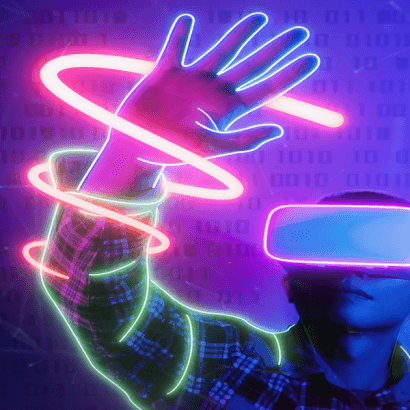Augmented Reality (AR) vs. Virtual Reality (VR)

Welcome to the world of AR and VR, where the lines between imagination and reality feel like one in the same thing.
In this blog, we will highlight the similarities and differences between these two technologies, as well as their various use cases. Furthermore, we will showcase the profound impact that both technologies have had on our daily lives.
Augmented Reality (AR)
As the name suggests, Augmented Reality augments our perception of reality by overlaying digital content onto our physical surroundings. Think of it with regards to a famous game that was making headlines years back, called Pokémon GO, where adorable creatures could be seen outside our gardens, on park benches, and near trees.
Now moving to more familiar examples, Snapchat filters turn mundane selfies into works of art. AR seamlessly integrates the virtual and the real, enhancing our experiences at the same time.
Consider this also so you can have a clear picture of how AR has affected our lives. You're looking for furniture for your new apartment, but visualising how that plush new sofa will look in your living room will always be difficult.
AR-powered apps such as IKEA Place allow you to sample furniture in your house before purchasing. There will be no more guesswork, only a seamless integration of digital and physical realities.
Virtual Reality (VR)
On the flip side, Virtual Reality takes us away to entirely simulated environments, immersing us in experiences beyond our physical world. Put on your VR headset, and suddenly, you're scaling the peaks of Mount Everest, Table Mountain, or walking in Times Square or even Mount Kilimanjaro all from the comfort of your living room.
It may sound like fiction, but all this exists in today's world. VR opens doors to endless possibilities, pushing the boundaries of imagination and exploration all into one thing.
The Growing Impact of AR and VR
The potential of AR and VR extends beyond the entertainment sector, with practical applications in a variety of real-life industries. One among many is in the healthcare industry.
AR technology enables surgeons to conduct complex surgeries with accuracy and precision, and at the same time, VR simulations are being used to aid in rehabilitation for people suffering from phobias.
From education to architecture, gaming to healthcare, the convergence of AR and VR is slowly redefining various industries and changing our sense of reality.
In conclusion
We hope this dive into the fascinating worlds of AR and VR has shed some light on how these incredible technologies are increasingly shaping our daily lives. From immersive gaming experiences to enhanced learning environments, AR and VR continue to push the boundaries of what’s possible.
If you’ve encountered any other impressive AR or VR applications, we’d love to hear from you.
Share them with us on our social media pages—we’re eager to see the innovative technology that has captured your attention and imagination.
Let’s keep the conversation going!

 Blog
Blog
Leave a Comment